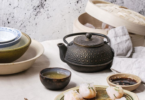What are Street Foods?
It is readymade drink or food which is generally sold in a public place or street like market or fair by a vendor or hawker often in a portable shop.
India and Street Foods.
India is special having so many street foods items across the states. Every Indian state or city has its own speciality as far as the street food is concerned. Some of the street food businesses are running from the generations belongs a particular family and sometimes the name of the street food is derived from the family name. The authentic items which can be find across the streets will generally has its own colour, taste and texture which might be tempting for the people in the streets and visitors from outside of the country also get attracted towards these foods, however there is strong caution for them to not try these foods unless they can tolerate spice in these items which might give them variety of acute gastric problems. Indian streets are famous for street foods and every state and the city have their own cuisine and they are less expensive, tasty and widely available.
Market of Street Foods.
There are basically organized and unorganized sectors as far as street food markets are concerned. An organized sector of this business includes the shops, restaurants and drive ins and malls etc. whereas the unorganized sector includes mostly the portable installations which can be moved from one place to another place with ease. Organized sector targets the well-off people in the society and the unorganized business will mostly depends on the people who are less privileged whose income is less to afford the food in restaurants etc. Again, it is a general observation and the trend of people going to a street and have a readymade food is becoming more popular in the society irrespective of the social status. A 2019 report published by Redseer suggests that the street food service market in India made a whopping 65 Billion USD, of which a percentage of 37 (24 Billion USD) goes to organized sector and remaining percentage of 67 (41 Billion USD) goes to largely unorganized sector.
COVID-19 Pandemic and Street Foods.
This pandemic has changed the lives of the people forever in all aspects. In these difficult times where hygiene is of utmost importance and the lives of the street vendors have changed drastically with the lockdown in place. They basically have the money in hand on a daily basis and will prepare the activity for the next day, however, the shutdown has changed it altogether and so is the street food market. There are considerable losses for the organized and unorganized sectors alike, however, calculation of losses in the latter kind of business highly inaccurate as they are not falling into the tax bracket of the government nor they are paying taxes even if their income is quite high. With the vaccination across the globe and the government of India is particularly fast enough to vaccinate the people the street market business is coming to the groove but with much restrictions in place, however in a country like India it is gaining pace.
Types of street foods in India.
As discussed, there are wide variety of street foods across India, which might satisfy our taste buds. Below is the map which shows the street foods and the location where they are famously sold.
We will try to know the street foods which are mentioned in the above map by their name, where they are famous for, recipe, preparation and an image which might sensitize our taste buds.
Name – KALARI KULCHA
Location – Jammu and Kashmir state
Ingredients – It is a traditional ripened cheese product indigenous to Rajouri, Poonch and Udhampur of Jammu province of Jammu And Kashmir state of India. It is a very dense cheese that is usually sautéd in its own fat and salted while serving. They are usually made from buffaloes or cow’s milk and sometimes with goat milk. Colour of kalari’s is white.
Preparation Method – Traditionally Kalari’s are made from raw (uncooked) full fat milk that is separated using soured milk. The solidified part is packed in doonas and sun dried. The excess liquid drips down from the semi-porous doonas and rest of the moisture is lost by sun drying. As the ambient temperature is low and the sun is strong in the mountains, the Kalari becomes dry from outside yet retains moisture from inside. Sometimes fungus grows on this and gives it a unique flavour. The taste of kalari prepared in the three regions of the state is different from each other. The Gujjar Bakarwal herders are known to make this cheese. Serving is what makes it most interesting nowadays. They are served while hot and salted with tomatoes, onion, bread and cabbage. The most recent improvisation is that it is getting served as a burger which suits the youth who may get attracted with its appearance.
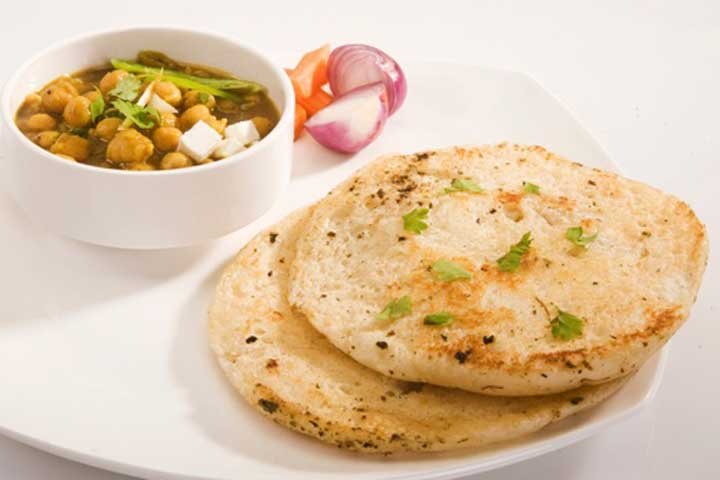
Name – SIDU
Location – Manali, Himachal Pradesh
Ingredients – dried yak cheese, or any other cheese, Vegetable, chopped mushrooms.
Preparation Method – It is a large yeasted and steamed dumpling, filled with some kind of vegetables, cheese or meat. A version with a green leaf not unlike spinach mixed with onion, oil and crumbled yak cheese. Once cooked, the dumpling is sliced into chunks, drizzled with ghee and served with a dipping sauce or chutney. chutney can be made with tomato cooked with green chillies, salt and oil in a pan like a marinara dipping sauce.

Name – CHOLE BHATURE
It is one of the most tempting and delicious dishes in the Punjab cuisine. The combination of flat bread made from atta and chickpea curry is what makes the chole bhature. It is one of the most eaten breakfast across the northern part of India in general and Punjab state in particular. The striking advantage of this dish is that it can be served as breakfast or lunch or dinner.
Location – Punjab, India
Ingredients – All-purpose flour, fermented dough, curd and sugar.
Preparation Method – You will have to start the night before. In a bowl take fresh curd or yogurt, sugar, baking powder and all-purpose flour and mix well all the above 4 ingredients. Cover the bowl with a cloth or lid and set it aside in a warm place overnight to allow natural fermentation to take place. The next day you will see tiny bubbles on the surface of the mixture. Stir the mixture so that the bubbles will disappear. Dough making is one of the crucial steps in the making of this dish. Take another bowl, mix together the wheat flour with salt and rub the oil or ghee or butter into it with your fingertips. Into this bowl, add the fermented mixture and the warm water. Mix the ingredients well and knead into a dough for until it is smooth. We can add little amount of flour if its wet. Gather the dough into a compact ball and cover it with a damp cloth. Again, set it aside in a warm place for 2 hrs. This is how the dough appears after 2 hours. Knead the dough again and make the dough into smaller soft balls. Roll each soft ball into round shaped flat breads. Heat oil or ghee and deep fry the bhature in the same way as you would fry pooris. The oil has to be moderately hot. Use medium to medium-high flame while frying. When one side is golden, gently flip and fry the second side. Fry till it appears in golden colour.

Name – BUN TIKKI
Location – Dehradun, India
Ingredients –Jeera powder -1/4 tsp, Some boiled potatoes cubes – 1/2 cup, Curd -1 cup, Tomato round slices-1, Ring onions – 1, Buns – 4, Amchur -1/4 tsp, onion -1, tomato -1, Lime juice – 1/2tsp, green chilly-3-4, Green chutney: pudina – 2 cups, Fennel seeds 1/4 tsp, oil- 1tbsp, Dhaniya powder 1/2 tsp, jeera powder 1/4 tsp, Red chili -1/2 tsp, saunth powder-1/2 tsp, water -12 cups, Jaggery crushed or grated-1 cup, Deseeded dates – 1 cup.
For sweet chutney: Imli -1cup
Bread slices crumbled -2, Amchur -1/4 tsp, Jeera powder -1/4 tsp, Garam masala-1/2 tsp, Dhaniya powder-1/2 tsp, Red chilli -1 tsp, Salt – 1 and half tsp, Chana Daal parboiled -1 cup, For tikki : Potatoes
-5 medium
Preparation Method – Peel and mash the boiled potatoes with a potato masher or with the back of a wooden spoon or a fork. Do this when the potatoes are still warm. It’s easier to mash them when they are hot or warm. add all the spice powders and salt. Mix well. add rice flour or corn starch. I have used rice flour. Then mix well. shape into flat round patties. heat some a tbsp of oil on a flat tava or frying pan. Place the potato tikkis on the pan. whilst the patties or tikkis are frying, slice the onions, tomatoes, cucumber.

Name – MAWA KACHORI
Location – Rajasthan
Ingredients – 500 grams all-purpose flour, 700 millilitre water, 1 kilogram’s sugar, 1 pinch saffron, 200 grams khoya, For Garnishing, 15 grams peeled pistachios, 15 grams peeled almonds
For the Main Dish – 2 1/2 cup ghee
Preparation Method – Step 1
Make a dough with all-purpose flour, ghee and water and rest for 30 minutes.
Step 2
Divide into balls and stuff centre with mawa, and flatten to make discs.
Step 3
Fry in ghee till golden brown. Make sugar syrup by heating water and sugar till the sugar dissolves completely.
Step 4
Just before serving dip the fried Kachoris in sugar syrup and garnish with chopped nuts.

Name – JALEBI FAFDA
Location – Gujarat, India
Ingredients – Gram flour/ chickpea flour, ajwain/carom seeds, crushed black pepper, baking soda, turmeric powder, oil as required and water as required.
Preparation Method – In a blow, add 2 tbsp oil, salt, turmeric powder, crushed black pepper, ajwain seeds, and baking soda together in a bowl and mix well.
Add the gram flour/ chickpea flour, add water little by little and make a soft dough just like chapatti dough. Knead the dough at least for 5-6 minutes and add 1 tbsp oil; again knead the dough nicely and leave it aside for 15 to 20 minutes covering with kitchen towel or with a clingfilm.
After 15 to 20 minutes; take some portion of the dough and give them oval shape and place it on a greased surface. (Note: Take flat surface like chopping board but not very smooth, it helps when you remove the fafda from the board.)
Take an oval dough ball; with base of your palm press the dough and increase the length of ball with hands and keep it on the board under your palm. Press it with the palms and it in front direction. Roll out the thin layer and cut out strips from it. Fry these strips over medium heat until crisp. Let them cool.
Now delicious fafda is ready to eat. Serve with spice green chilli chutney or chutney of grated papaya and fried green chilli.

Name – VADA PAV
Location – Maharashtra
Ingredients – It is basically a savory slider of fried mashed potato fritters stuffed in a dinner roll.
Preparation Method – Boil 2 large potatoes, about 350 grams. Peel and then mash them with a fork in a bowl.
You can boil or steam the potatoes in a pan, Instant pot or pressure cooker. Remember to drain the water very well from the boiled potatoes before you mash them.
Heat 2 to 3 teaspoons oil in a small pan. Add ½ tsp mustard seeds and crackle them. Then add 7 to 8 curry leaves and asafetida. Stir and sauté for about 5 seconds. Then add 6 to 7 small to medium-sized garlic and 1 to 2 green chilies, which have been crushed in a mortar-pestle. Add ⅛ teaspoon turmeric powder. Stir until the raw aroma of garlic goes away. Pour this tempering in the mashed potatoes. Add 1 to 2 tablespoons chopped coriander leaves. Also add salt as required. Mix everything well. Then make small to medium balls from the mashed potato mixture. Flatten these balls a bit. Cover and keep aside.

Making batter
In another bowl, make a smooth batter from 1 to 1.25 cups besan (gram flour), ⅛ teaspoon turmeric powder, a pinch of asafoetida, a pinch of baking soda (optional), salt and ½ cup water.
The batter should not be too thick or thin. If the batter becomes thin, add 1 or 2 tablespoons of gram flour. If the batter becomes thick, then add 1 or 2 tablespoons water. Dip the slightly flattened potato balls in the batter and coat it evenly with the batter. Gently drop these batter coated potato balls in medium hot oil. Depending on the size of the kadai or pan, you can add more or less of the vada while frying. Deep fry these batata vadas till golden. Drain them on kitchen paper towels. Make all vada this way and keep aside.
Assembling vada pav
When they are still hot or warm, you need to serve them. Take all the chutneys and pav on your work surface. Slice the pav without breaking it into two parts and keep aside.
If you don’t have sweet chutney, then just make the vada pav with green chutney. I have mentioned the recipes for green chutney and sweet chutney in the recipe card below.
You can make these two chutney recipes some hours ahead or a day before and refrigerate.
Spread both the green chutney and sweet chutney on the sliced pav. You can also spread green chutney on one side and sweet chutney on the other side. Sprinkle the dry garlic chutney. This is optional and if you don’t have you can skip it. Place the hot batata vada sandwiched in the bread slices. Serve vada pav immediately or else the pav becomes soggy. You can also serve some green chillies, both the chutneys along with it.
Name – ROS OMLETTE
Location – Goa
Ingredients –
· For the Chicken Pieces marination
Xacuti masala Paste Chicken pieces, Salt and Lemon juice
· For the Green Masala Paste
Coriander leaves, green chillies and garlic
· Other Ingredients
Oil, large onion and chopped coriander
· For the Omelette
Eggs (as required), large onion, salt, green chillies and oil
Preparation Method: Firstly, prepare the Xacuti masala paste and keep aside. Then wash the chicken pieces thoroughly and apply salt appropriately. Apply the masala paste which is prepared in the first step. Mix well and leave it for 30 minutes for marination. In a separate bowl add the oil, sauté the onions then add the chicken pieces and cook for 10 minutes. Add water which is just enough for the chicken pieces to float in water and cook for 10 more minutes. Then add the garam masala paste and cook for 10 more minutes. Finally garnish it with coriander leaves and the ros is ready to serve.
Omelette preparation
Take a bowl add in the eggs, onions, chillies and garlic paste. Then mix it well. Prepare omelettes as required.

Name – PAZHAM PORI
Location – Kerala
It is a popular snack from Kerala which is made from ripe bananas. A special banana is used to make this snack is called nendram pazham.
Ingredients – Ripe bananas, all-purpose flour, oil.
Preparation Method – Its basically a vegan banana fritters recipe. Always use the ripe bananas which are not so soft. In a mixing bowl, take ½ cup all-purpose flour, 1 tablespoon sugar (optional), a pinch of turmeric powder and a pinch of baking soda. You can also add 1 tablespoon rice flour for some crispiness. Mix well. Then add water in parts. I used ⅓ cup of water. Depending on the quality of flour, you can add less or more water. If the batter becomes thin, then add some more all-purpose flour.
Mix to a smooth batter without any lumps. The batter consistency is slightly thick so that it coats the banana slices very well. Keep aside. Peel two large bananas or 3 medium-sized bananas. Then first slice them horizontally in half or quarters. Then slice each piece vertically in two equal parts.
Frying pazham pori
Heat oil for deep frying in a pan or kadai. When the oil becomes medium hot, then the banana fritters can be fried. Dip each slice in the batter and coat it well with the batter. Gently place the batter coated banana slices in medium hot oil. fry the slices depending on the size of the kadai or pan. When one side is cooked, then turn over gently and fry the other side. Fry till both sides is light golden. You don’t need to fry these fritters too much. stop once the bananas start oozing out moisture into the oil and the oil begins to splutter too much. We just need to fry till the outer coating is done. A light golden is fine. Remove with a slotted spoon. Keep the fried banana fritters on kitchen paper towels. In the same way, fry the remaining banana slices. You may see some caramelisation happening on the remaining banana fritters. This is due to the moisture and sugars which have leeched into the oil while frying the first batch. prepare the pazham pori in the same manner and keep them on kitchen paper towels, so that the excess oil is soaked up. Serve while they are hot as evening snack with tea.

Name – VARIETY DOSA
Location – South India
Its basically a breakfast recipe which can take so many shapes and recipes vary across the southern part of India, however its slowly becoming an evening snack or breakfast in northern part of India too. Dosa is particularly famous in Tamil Nadu, Karnataka, Kerala, Pondicherry, Telangana and Andhra Pradesh.
Ingredients – Dosa batter, onions and many other requirements as per the type of dosa and taste we need.
Preparation Method – Dosas are made from soaked and drained rice, urad daal and fenugreek seeds.
These soaked ingredients are thoroughly grinded using the food processor and a thin batter will be used to make dosas. We need to left the batter overnight to get fermented. According to the taste and sized and flavours we can make dosas of different sizes and flavours etc.
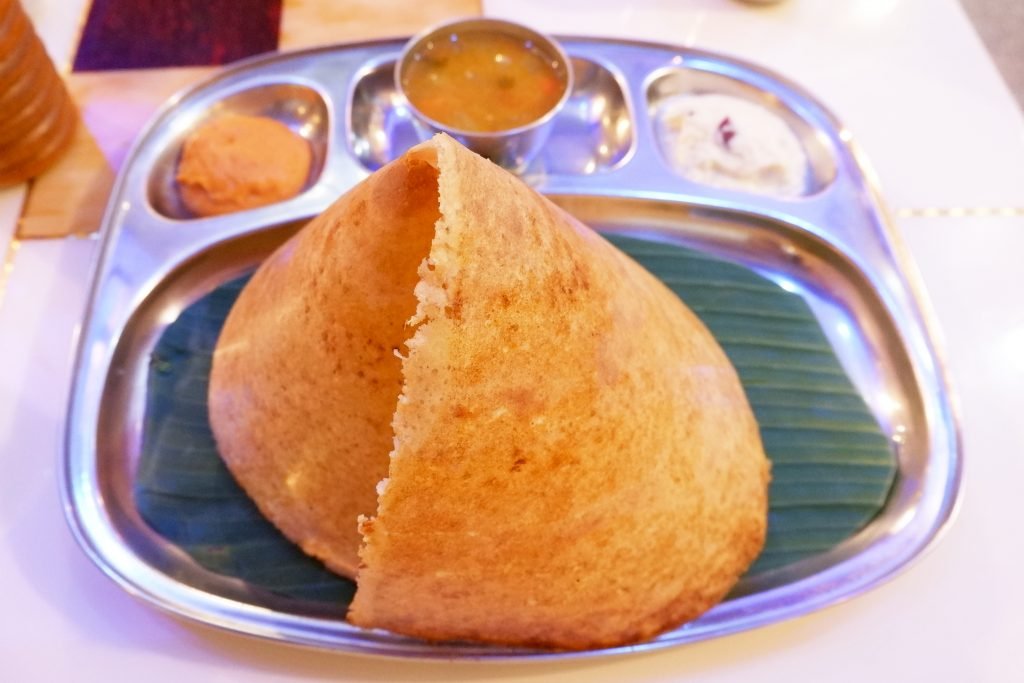
Name – POHA JALEBI
Location – Indore, Madhya Pradesh
Ingredients – Lemon wedges, chopped onion, grated coconut, pomegranate seeds, namkeen, cilantro, salt, red chilli powder, turmeric, curry leaves, green chillies, fennel seeds, mustard seeds, potato.
For Poha
Thick poha, water, sugar, lemon juice, hot oil, yogurt, and corn starch.
For Jalebi
All-purpose flour as required
Preparation Method
Serve poha immediately with garnish of your choice. Stop the heat and sprinkle with chopped cilantro. Add the poha and mix well. Cover and cook on low heat for 5 minutes. Add turmeric, potatoes and cook covered until potatoes are tender. Alternately potatoes can be microwaved until tender beforehand and can be added here to save time. Heat 2 tsp oil in a pan, add mustard seeds and once they start to splutter, add fennel seeds, onions, green chilies and curry leaves. Cook until onions turn translucent, this takes about 3 to 4 minutes.
To make Poha: Wash poha 2 to 3 times, drain and set aside until ready to use. There should be just a little bit of water left in the poha but not a lot.
Remove and place them on a wire rack to cool. Enjoy them hot, warm or at room temperature. Store in an airtight container, they keep well for up to 2 to 3 days.
Heat oil for deep frying. Carefully pipe the batter in circles into the oil. Cook till the jalebis are crisp. Remove from the oil and place them in the syrup for 2 to 3 minutes, turning them around to coat evenly.
Make Jalebis: Pour the batter into a ketchup bottle with a small hole or pour into a Ziplock bag and make a tiny hole in the corner.
Keep the syrup warm and ready.
Make the Sugar Syrup: Combine sugar and water in a saucepan and bring to a boil. Simmer until it reaches single string consistency. (When you take a drop of the syrup between 2 fingers and stretch, it should stretch in 1 single thread).
Cover and set it aside for 12 to 24 hours to ferment. It should be foamy with bubbles and smell fermented. Mix the batter really well to make it more workable.
To Make Jalebi: Combine all-purpose flour, corn-starch, yogurt, food colour (if using), hot oil and lemon juice to form a smooth batter.
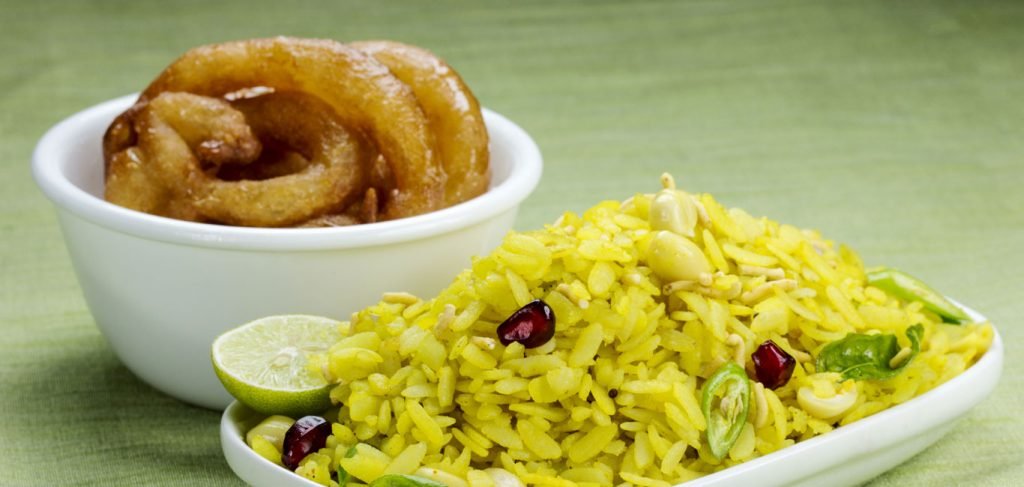
Name – PADDU
Location – Tamil Nadu
Ingredients –
For Batter – Idly rice or thick grained rice, urad daal, chana dal, poha, fenugreek and salt to taste
To make paddus
Yogurt, jeera, onions (finely chopped), curry leaves, green chillies and finely chopped coriander.
Preparation Method – Wash and drain the rice and urad daal separately. The to the urad daal add poha, fenugreek seeds and chana daal and soak it for overnight. Next day drain the rice and urad daal and add salt then grind till the batter is smooth and thick. We need to leave it for 12-15 hours for fermentation. It fluffs if fermented. Then mix well add jeera. Then add yogurt and mix well. Then add minced chillies, finely chopped onions, curry leaves and coriander and mix well. To make paddus, heat up the paddu pan. Oil the pan well. Pour in ladleful of paddu batter into paddu holes. Add some oil on top, cover and cook till light golden. Flip and let it roast on the other side
Serve them hot with butter/benne and shenga chutney. They can be even served as a starter dish if you are making South Indian food for a party or get-together.

Name – MIRPAKAYA BAJJI
Stuffed Mirapakaya Bajji is quite popular snack in southern parts of India especially in the states like Andhra Pradesh, Telangana and Karnataka.
Location – Andhra Pradesh and Telangana
Ingredients – Gram flour batter, onion, lemon, and green chillies.
Preparation Method – Rinse green chillies and make slit to remove the seeds completely. Add besan, corn flour, salt, ginger garlic paste, ajwain and red chilly powder to a wide bowl. Add soda which make the Bajji fluffier. Then add the water to make the batter and keep it aside for 5 minutes so that the soda will have its effect on the batter. Consistency is the key and don’t overdo the batter which might give a loose batter with which the bajji’s will not be in shape.
Take a bowl and pour the oil and let the oil boil. When the oil becomes hot enough dip the green chilli in the batter and place it in the oil. Remember to place the chilli with batter in the middle of the bowl so that the Bajji will be crispy enough to eat. Flip the Bajji to other side and let it boil and finally remove with the spoon with holes so that the oil will be completely drained.

Name – DAHIBARA ALOODUM
Location – Cuttack, Odisha
Ingredients –
For Dahi Bara (Vada)
Urad daal whole (soaked for at least 4 hours), rava sooji, salt to taste, ginger, mango ginger, curd, water, mustard seeds, cumin jeera, dry red chilli, split green chilli and curry leaves.
For Aloo Dum
Potatoes, onions, ginger garlic paste, tomatoes, dry red chillies, bay leaf, asafoetida, turmeric, red chilli powder, cumin powder, coriander powder and garam masala.
For garnishing
Cumin, red chillies dry and roasted, black salt, khara sev khara, chopped onion and coriander.
Preparation Method – For Making Dahi Vada: Make a thick paste by grinding soaked urad dal (try not to add too much water else it will be difficult to shape the vada later). Add Salt and Rava. Mix and keep aside. In a big wide container mix curd, water, grated ginger, grated mango ginger (if using). Keep aside. In a pan heat 1 tbsp oil. Add mustard seeds, Cumin, Urad dal, Curry leaves, dry red chilies, split green chili. When the mustard seeds start to crackle and the tampering is aromatic switch off the gas. Let it cool down for 5 minutes and then add to the curd mixture. Next beat the urad dal paste vigorously using your hand. It’s the difficult but most crucial step of the process. The more you beat, the more you will incorporate air into the batter. To know the batter is ready, drop a small piece of batter into the water. If it floats then consider it as ready, else some more muscle work. Heat oil in a kadhai for deep frying the vada. When the oil is medium-high hot take small portions of the batter and shape it. Slowly slide into the hot oil. The oil should not be too hot, else the vada’s will remain undercooked. You would see the vadas will start floating. Drop-in some more shaped vadas into the oil. Don’t overcrowd the pan. Fry till they look light golden brown in color on both sides. Once the vadas are done, remove them from the oil using a slotted spoon and put it immediately into the water. Let them sit in water for 5-8 minutes. Then remove from water and squeeze the vadas in between two palms to drain excess water. Add to the curd mixture. Repeat the above frying, soaking in water, and finally putting into the curd mixture process for the remaining batter. Carefully turn the vadas so that they are evenly soaked in curd. While the Vadas soak in the curd mixture, we shall prepare Aloo Dum. For Aloo _Dum: In a pan heat 2 tbsp oil. Add dry red chilies, Tej Patta. Add asafoetida. Add chopped Onion and fry till brown in color. Add Ginger-garlic paste. Fry till the raw smell is gone. Add Chopped tomatoes. Cook until the tomatoes are soft and mushy. Add turmeric powder, cumin, coriander powder, red chilli powder. Fry until the oil is separated. Add cubed potatoes. Fry for 6-7 minutes, till the potatoes, are nicely coated with the spices and browned. Add garam masala. Mix well. Add water. Bring the curry to a boil, roughly for 10 minutes. Serve Dahi bara, topped with warm Aloo dum and garnished with chopped onion, Sev, coriander leaves. And off-course dusted with lots of roasted cumin, red chili powder, and chat masala.

Name – BEDHAI (BEDMI PURI)
Location – Uttar Pradesh
If you have even gone to UP and had breakfast, this is one of the most loved breakfast. You will find this in every nook and corner at sweet shops or restaurants.
Ingredients – Skinless urad daal, whole wheat flour, fennel seed powder (crushed), coriander powder, asafoetida, dry ginger powder (sonth), red chilli powder, salt, nicely chopped coriander leaves and oil.
Preparation Method – Firstly, wash and soak the urad daal in the water for 6-8 hours. Drain the water and grind it till become thick paste. In a separate bowel add wheat flour and spices and mix well. Then add the daal paste to the flour till it become a soft dough using small amounts of water. Add oil as needed to the mixture and knead for one minute. Then cover the dough with damp cloth or plastic cover and set it aside for 30 minutes or more. Apply oil to the palm and knead the dough again. Again, oil the palm and divide this dough into small soft balls. Oil the rolling pin and surface make the soft balls into 5–6-inch circles. Heat oil in deep kadai or pan over medium to high flame the place the puri into the oil and press with skimmer. The puri should puff off up. Turn the puri and fry till both the sides turn golden brown. Remove the puri from the pan and place it on the absorbed cloth and oil will be removed from the puri and repeat this process for the remaining puris. Serve hot bedmi puri with sonth chutney.

Name – LITTI CHOKA
Location – Bihar and Jharkhand, India
Litti choka is a traditional Bihari and Jharkhand dish that is quite similar to Rajasthani Baati but still very different. The litti is the bread made out of flour and is stuffed with sattu and chokha is the side dish made using eggplant, potato or tomatoes.
This is a very traditional dish that’s popular in Bihar and Jharkhand, it’s a special dish that’s made in most Bihari households and the whole family comes together to enjoy this ghee dunked stuffed wheat balls.
Ingredients –
For Litti – Whole wheat flour, salt, ghee and cooking Soda
For the filling – Sattu, mustard oil, ginger, green chilli (finely chopped), fresh coriander, pickle masala, lemon juice, salt and red chilli powder.
For Baingan Ka Chokha – Brinjal (Large), tomato, chopped onion, green chilli, fresh coriander, salt, mustard oil and lemon juice.
Preparation Method –
For Litti – Add whole wheat flour, salt, ghee and cooking soda in a bowl and mix well. Add water and knead to make a medium soft dough.Cover the dough and keep aside for 30 minutes.
For the Filling – Add all the ingredients in a bowl and mix well. Add some more oil if the filling is too dry. You should be able to bind the filling in your fist.
Assembling the litti – Take out a large lemon sized dough and make it into a ball. Roll the dough ball to make a 4–5-inch circle. Keep 2 tbsp of filling in the centre of the dough and bring the ends together. Nicely seal the ends. Make all the lit in the same manner. Keep the litti covered with a cloth. Pre heat an oven to 180 degrees C. Bake for 20-25 minutes until browned from the top. Flip the litti upside down and bake for another 10-12 minutes. They should be evenly browned from all the sides. Hold the litti with a tong and roast them over direct flame so that brown spots appear all over them. Dip the litti in ghee and serve with chokha.
For Baingan ka Chokha – Roast the baingan and tomatoes over direct flame until nicely charred. Remove them on a plate and let cool. Remove the skin of the eggplant and tomato and mash them nicely. Add all the remaining ingredients and mix well. Serve hot with litti.

Name – PHAGSHAPA
Location – Sikkim, India
It’s a Nepali pork dish from Sikkim which is northeast state of India. Its not as spicy as other dishes as the only chillies are used in this. This dish is perfect for the summer days where the spice is not recommended to eat. Its slightly flavoured, the pork and radish combination make it a perfect dish and goes well with plain white rice.
Ingredients – Pork (which cut into small pieces), onion (sliced), whole red chillies, ginger paste, white radish (cut into thick slices), red chilli powder, oil and salt.
Preparation Method – Heat oil in a pressure cooker, then add the sliced onions. Stir the onions for 2-3 minutes till they become soft. Then add the ginger garlic paste and red chillies and fry for 2 more minutes. Then add the radish which is an important ingredient to the onion and ginger. Now add the pork slices and red chilli powder and cook for 3 minutes. Add a cup of water or as needed and cover the pressure cooker and cook for 10-15 minutes until the pork is properly cooked. Finally release the steam and let it simmer up to 10 minutes. Serve hot with rice.

Name – AMITAR KHAR
Location – Assam, India
It’s a traditional assamese dish. This dish basically consists of unripe papayas coked with chillies and panch phoran. Assamese take this dish before meals as they believe that this dish will cleanse the stomach. The unripe papayas mixed and blended with mild spices and served hot with rice and dal.
Ingredients – Raw papaya (remove skin and cut into small cubes), mustard oil, green chillies, bay leaf, dry chillies, panch phoran, salt and sunflower oil.
For panch phoran – Fennel seeds, cumin seeds, onion nigella seeds, mustard seeds and methi seeds.
Preparation Method – To prepare Assamese Amitar Khar Recipe, get ready with all the ingredients. Pound the panch phoran in a mortar and pestle such that it becomes easy to diffuse the flavours in to the recipe. Heat a kadai with cooking oil. Once the oil is hot, add panch phoran pounded spices, bay leaf, and dry red chilli. Let the seeds splutter. Once it splutters, add raw papaya, green chillies. Mix them well and cook with the lid covered until the papaya pieces are softened and cooked well. Stir often to avoid being burnt at the bottom. (You can add a tablespoon of water to prevent this) Cook until the water evaporates completely from the papaya. Serve Assamese Amitar Khar Recipe with steamed rice.

Name – Dung Po
Location – Arunachal Pradesh
Ingredients – Rice, leaves and brass utensil
Preparation Method – It is beautiful steamed rice. The locals cook it in brass utensils. The rice is placed in leaves so that they don’t spread. They keep one vessel over the other; One has boiling water and the other one has the rice. The aroma of the leaves will make you hungry, and you just can’t wait for lunch.
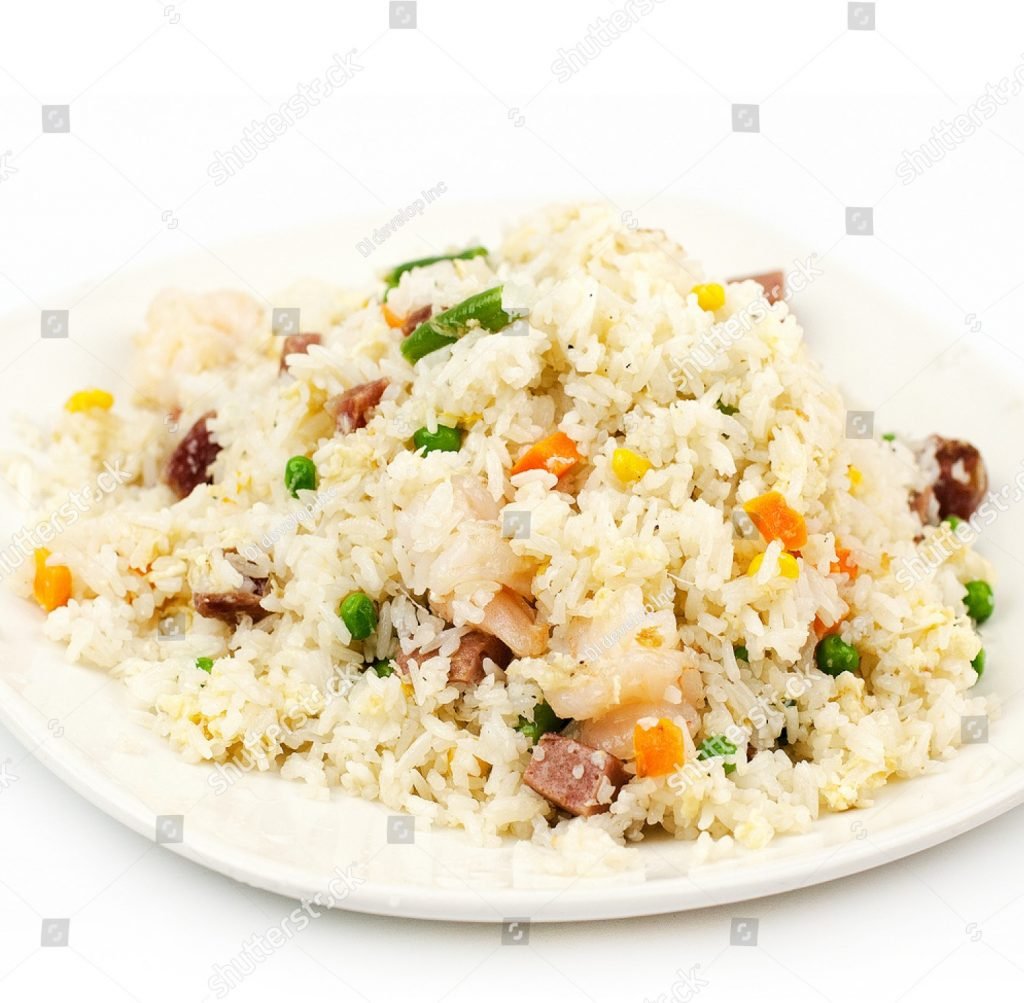
Name – GALHO
Location – Nagaland, India
Ingredients – Rice, cabbage, spinach leaves, ginger, tomato, green chilli and salt to taste.
Preparation Method – In a pressure cooker add all the ingredients, rice, chopped cabbage, spinach leaves, ginger grated, chopped green chili, salt to taste, and chopped tomato. I have used pressure cooker to make galho. You can also cook it in a pan.
Add 2 cups of water. Close the pressure cook and keep the flame high till the first whistle. Thereafter reduce the flame and cook on low flame for 5-7 minutes. Let the pressure release. Open the cooker.
Rice should be mushy. Serve hot.
Rice preparation from the state of Nagaland, packed with vegetables is Galho. It has consistency as that of khichadi. However, no lentils are used to make galho recipe otherwise it would have been very close to vegetable khichadi. As such it is a non-vegetarian dish and also uses fermented soybeans and bamboo shoots, but we are preparing the vegetarian version of galho without any fermented ingredients. It can be served for breakfast or light lunch or dinner.
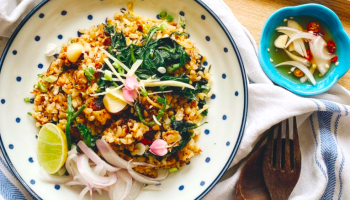
Name – KELLI CHANA
Location – Manipur, India
Ingredients – White peas, turmeric powder, salt, oil, bay leaf, ginger paste, garlic paste, chilli, onion, coriander seeds powder, cumin seeds powder, red chilli flakes and coriander leaves.
For garnishing – Chopped onions and coriander leaves.
Preparation Method – Wash and soak the white peas for 6-8 hours. Add turmeric powder and salt to taste, pressure cook them for three whistles. Switch off the gas. In a pan add oil and bay leaf to it. Heat it. Keep the sliced onions, chopped ginger, garlic and slit green chillies ready. Add them to oil and cook till onions become pinkish. Add the remaining ingredients except the white peas and cook for some time. Now add the white peas and cook for about 2 minutes with covered lid. Serve the Kelli chana garnished with spring onions and coriander leaves.

Name – BAI
Location – Mizoram
Bai is a kind of soup that hails from the exotic state of Mizoram. The state boasts of a number of indigenous leafy greens, many of which are unheard of, and several of these greens are used in preparing Bai. Whatever vegetables are in season, find their way into Bai. Commonly used ingredients in Mizo kitchens, King chillies, and fermented mustard are also used in making this soup. If it is being served to non-vegetarians, pork sauce can be added.
Ingredients – Water, baking soda, finely chopped cauliflower (stalks, leaves, florets), beans, potato, green chilies, cooked rice, salt.
Preparation Method – Pour the water in a cooking pot. Place it on high heat and bring it to boil. Add salt to taste and baking soda, then mix well. Add the chopped cauliflower stalks, florets and leaves, as well as the chopped beans and potato. Also, add the green chillies. Stir well. Keep the pot covered and cook in medium flame for about 15-20 minutes – until the vegetables get tender and not overly mushy. Keep checking periodically, add more water if the mixture gets too thick and continue stirring. Now, add the cooked rice and mix well. Cook uncovered on medium flame for a couple of minutes more.

Name – BESAN CHILLA
Location – North India
Besan Chilla or besan cheela is a delicious and healthy savory Indian pancake recipe made with gram flour (besan), aromatics and tomatoes. Fill the batter with your favorite grated vegetables to make your meal more nutritious, and serve as a quick breakfast, brunch, or even as a late-night snack. Chilla or cheela is the Indian version of a pancake. Made with various cereal or lentil flours, they can be savory or sweet. In the Indian cuisine, there are many variations of chilla that are prepared.
Besan Chilla is a savory version made with gram flour, which is simply ground black chickpeas without the husks or skins.
In Hindi, besan is gram flour and chilla is a pancake. So you see the word ‘besan chilla‘ exactly translates to gram flour pancake.
Besan Chilla can be on your breakfast or snack menu as a healthy protein-rich pancake for yourself and your family.
Ingredients – Gram flour or chickpea flour, turmeric, ajwain, red chilli powder, salt, onion, tomato, coriander, ginger and green chillies.
Preparation Method – First, measure 1 cup of gram flour (besan) and pour it into a mixing bowl. Replace gram flour with chickpea flour if you do not have it. Next, add in your chopped veggies and herbs. It’s important to make sure all of these ingredients are FINELY chopped, otherwise, it becomes difficult to spread the chilla in the pan. Then it is time to mix in the spices, including 2 to 3 pinches of turmeric powder, ½ teaspoon carom seeds (ajwain) and ¼ teaspoon red chili powder. Also add salt as per your liking at this step. Before you start to stir or combine your ingredients, first add half a cup of water to the besan cheela mixture. Next use a wired whisk to combine all of the besan chilla ingredients. Then, add an additional 1 to 3 tablespoons of water, depending on the quality and texture of the besan. Next use a wired whisk to combine all of the besan chilla ingredients. Then, add an additional 1 to 3 tablespoons of water, depending on the quality and texture of the besan. Finally, you can begin cooking your besan chilla! I use a tawa (flat, round-shaped pan) to cook my besan cheela, but you can also use any well seasoned frying pan or a cast iron skillet or a non-stick pan. Next, gently use the back of the ladle or measuring cup (if you have used one) to spread the batter. Make sure you are spreading the batter gently so that the chilla does not break. Then continue to cook the chilla on a low to medium-low heat until the top begins to look cooked or you start seeing some air-pockets. Additionally, you can drizzle oil (about ½ to 1 teaspoon) on the chilla at the edges and all around while it is cooking to help it not stick to the pan. Next continue to cook until the base gets light golden. Then it’s time to flip your besan cheela and cook the other side. Then continue cooking until you see golden spots on the besan chilla. Cook your besan chilla evenly and well. You can flip the chilla once or twice for even cooking. Finally, fold your besan chilla and serve them while they’re hot! Continue to make all chilla this way. If you make a larger batch, then cook chilla on two pans or skillets.

Name – DHUSHKA BARRA
Location – Jharkhand, India
Dhooska or Dhuska or Dushka is a popular deep-fried snack eaten across Jharkhand. The ingredients for this dish are dhooska are powdered rice, chana dal. Sometimes boiled potatoes are also used.
Ingredients – Basmati rice, chana dal, garlic, green chilli, salt, curry leaves, onion, turmeric and water.
Preparation Method – First step will be the soaking of rice and dal for 4 to 5 hours. Then drain it and grind with green chillies, garlic and little water. The batter should not be too thick or too smooth. Add a bit of turmeric and salt to it. Take a pan and heat the oil to a lower temperature. Then take a spoon and slowly pour the batter into the oil and fry them on both the sides till they become golden colour. Server the dhushka hot with any chutney.

Name – JADOH RICE
Location – Meghalaya
The name is taken by the local community in Meghalaya state of India, the most popular dish from the land of hills, the jadoh rice
Ingredients – Basmati rice, ghee, cinnamon, clove, star anise, bay leaf, onion, ginger and garlic paste, green chilli, mint coriander paste, black pepper, carrot, potato and water.
Preparation Method – Wash and soak the basmati rice for 30 minutes. Take a pan heat the ghee and add spices. Then add the onion a sauté it until golden brown. Then add the ginger garlic, green chilli, coriander and mint paste and fry until the raw smell vanishes. Then add the veggies and cover with lid until they become soft and lightly cooked. Add the rice which is important part of the dish and fry for few seconds. Add salt and water cook till 75% done. Then cover with lid and cook for 15 minutes until the entire water is absorbed. Remove flame and let it set for 10 minutes and then serve hot with coriander leaves garnishing.

Name – MUYA AWANDRU
Location – Tripura, India
For the rice lovers, this dish is an absolute delight. Basically, made using rice flour and fermented fish and the use of bamboo shoots is what makes it an amazing dish. Use of bamboo shoots are proven to have healthy benefits besides the dish having no use of oil makes it perfectly healthy rice dish.
Ingredients – Bamboo shoot, fermented fish, green chilli, rice flour, salt, water and Parsley leaves
Preparation Method – Peel off the hard exterior of the bamboo shoot, until you find the tender part and then cut into flat slices, each being 2-3 mm. Wash the fermented fish thoroughly. Prepare the liquid paste of rice flour Cut the green chilli pepper length wise. Wash the snail properly and thoroughly. Cut a small portion of the pointed end of the snail-shell. Boil the thinly sliced bamboo shoot in a cooking pot, making sure you provide enough water, so even after boiling it for 15-20 minutes in a medium high flame, there is enough water left to be drained out. After draining the excess water, place another cooking pot on the flame. Boil back the sliced bamboo shoot on medium high heat. Add the finely washed snail. This time, add all the other ingredients. Remember not to miss out the salt! Add required amount of salt, green chilli pepper, fermented fish and let it cook for a good 20 minutes. After about 20 minutes of cooking, add the rice flour paste to it. Keep in mind to continuously keep on stirring it while pouring the paste, in order to avoid lump formation. Let it cook for another 5 minutes, till you attain slightly thick gravy. Put off the flame. Your Bamboo shoot gravy (Muya Awandru) is ready to eat. Serve it hot. Add some parsley leaves for garnishing purpose.

Name – KATHI ROLL
Location – West Bengal, India
Kolkata Kathi Roll or Kati Roll is a famous in the streets of Kolkata in West Bengal. Basically, its roasted kababs wrapped in a paratha with some onions, however over the years it has taken so many variations all around India.
Ingredients – Wheat flour, potato, capsicum, tomato, mustard oil, cumin, asafoetida, onion, garlic paste, masala powder, coriander powder, red chilli powder, turmeric, salt, coriander leaves and green chutney.
Preparation Method – Kathi Roll is one of the easiest recipes to prepare at home. Here’s how you prepare this scrumptious snack recipe. First, you need to prepare the dough., Take a dough kneading plate and add wheat flour in it along with a little salt. Mix well and then add water in batches to knead a soft and smooth dough. Once the dough is ready, cover with a damp cotton cloth and keep it aside till required. Afterwards, put a pressure cooker on high flame and add potato in it along with enough water to submerge the potato in it. Close the lid of the cooker and cook for 2 whistles. Once cooked, let the steam release on its own and then drain the extra water and peel the potato in a bowl, mash it using a masher. Now, wash tomato and capsicum in running water and finely chop them in separate bowls. Peel the onion and thinly slice it in a bowl, keep aside till required. Put a non-stick pan on medium flame and heat oil in it. Once the oil is hot enough, add cumin and mustard seeds in it, when they start to crackle, add a pinch of asafoetida along with salt. Saute for a few seconds and then add the onions in it. Saute the onions until translucent and pink in colour. Now, add garlic paste in the pan and saute for a minute, and quickly add capsicum along with tomato in the pan. Stir to mix all the spices and then add mashed potato in it. Mix once again and cook for 2 minutes. Afterwards, add turmeric, garam masala, chilli and coriander powder in the pan and toss lightly to incorporate the spices well with vegetables. Let the veggies cook for 2-3 minutes, then close the lid of the pan and lower the flame. Let the veggies cook for about 5 minutes. Meanwhile, unwrap the dough and divide it into 2-3 equal parts on a flat surface and make a ball of each. Using a little flour, roll these balls into the shape of a chapati. Put a Tawa on medium flame and when it’s mildly hot, carefully transfer the chapati on the heated Tawa. When tiny bubbles start to rise, flip it with a spatula and cook until both sides are golden brown. Apply a little oil on both sides and cook well. Put it aside and repeat the procedure to make more chapatis for the roll. By now, the veggies will be done, switch off the flame and transfer the veggies to a bowl. Take chapati and apply a teaspoon of the green chutney evenly on one side. Then, add sufficient number of cooked vegetables in the middle of the chapati. Garnish with some raw onion slices and chopped coriander leaves, and wrap it tightly to make a roll. Repeat to make more such Kathi rolls and serve hot.




